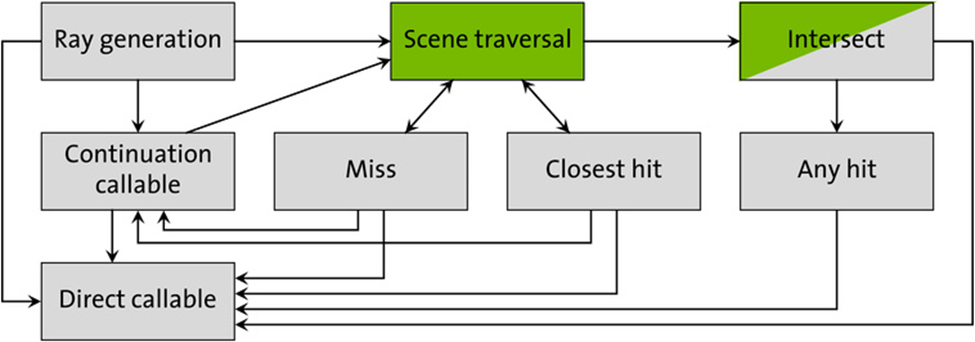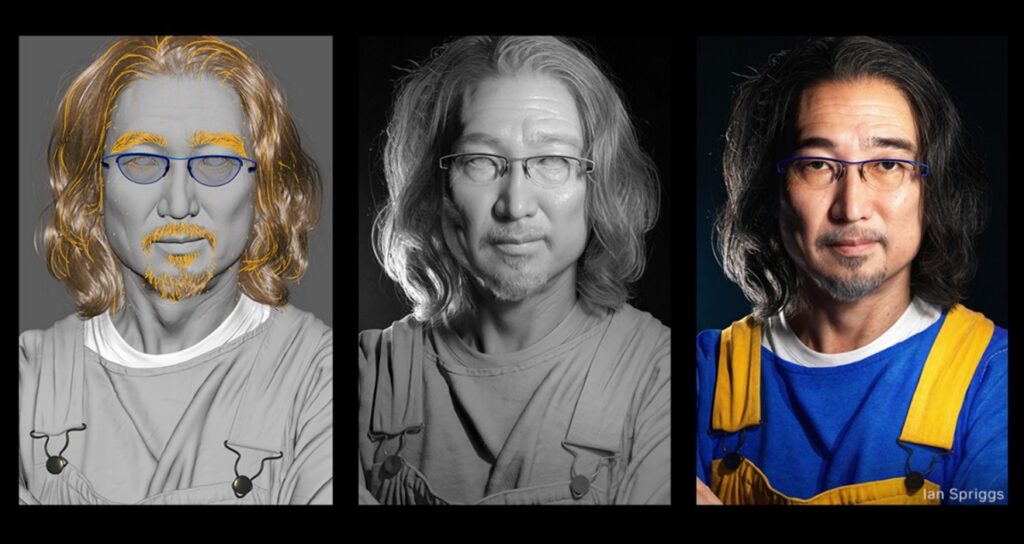During Siggraph 2023, Nvidia introduced OptiX 8, its latest GPU ray-tracing framework, for enhanced performance. OptiX, a high-level SDK, seamlessly integrates ray tracing into graphical Nvidia GPU applications. OptiX 8 brings efficiency and performance enhancements for intricate visuals. It optimizes ray tracing with a versatile pipeline and acceleration structures. Nvidia OptiX offloads computations to GPUs using low- or high-level APIs. It simplifies shading and handles complex scenes with hardware acceleration. It supports CUDA, motion blur, denoising, and diverse primitive types. OptiX 8 is designed for Nvidia GPUs, supports AI rendering, and is free for commercial use. It extends to Arm architecture.
In 2007, Nvidia bought Mental Images, the premier ray-tracing company of the time, one of, if not the first, to introduce the concept of physically accurate ray tracing and acceptance of almost any materials library. A couple of years later, to bring ray tracing to the masses and exploit the power of Nvidia’s GPUs and its ray-tracing software, the company introduced a special ray-tracing SDK, OptiX. The idea was to compete with Intel’s widely used free ray-tracing program, Embree, and get developers hooked on Nvidia’s CUDA and OptiX. The effort succeeded in attracting a lot of new developers but never displaced Intel, especially in the high-end scientific visualization segment. Nine years later, Nvidia introduced its RTX GPUs and completely changed the market dynamics.

Nvidia unveils OptiX 8
During Siggraph 2023, Nvidia unveiled OptiX 8, the newest iteration of its ray-tracing framework designed to enhance ray-tracing performance on its GPUs. This release signifies a notable milestone in Nvidia’s ray-tracing technology.
OptiX, short for Optimal Ray Intersection, is a high-level global illumination and ray-tracing SDK. The interface, says Nvidia, seamlessly incorporates and harnesses ray-tracing capabilities within graphical applications tailored for Nvidia GPUs.
The introduction of OptiX 8 introduces several enhancements compared to its predecessor. These improvements include features and functionalities to increase efficiency and performance in GPU-accelerated ray tracing. The objective is to unleash the potential of GPUs completely, enabling applications with visually intricate graphics to operate faster and fluidly while rendering intricate and realistic visuals.

The OptiX ray-tracing framework is an application framework. Designed to optimize the performance of ray tracing on a GPU, this tool offers an uncomplicated, recursive, and versatile pipeline that accelerates ray-tracing algorithms. It channels the computational power of a GPU to ray-tracing applications with programmable intersection, ray generation, and shading capabilities.
Nvidia’s OptiX, classified as a ray-tracing API, first emerged around 2009 after Nvidia acquired Mental Images. OptiX offloads ray-tracing computations onto the GPU via either the low- or high-level API introduced through CUDA. As an integral component of Nvidia GameWorks, OptiX has played a pivotal role in hastening the pace of ray tracing, offering a framework for graphics and simulations.
OptiX’s programmable shading offers a programmable pipeline that Nvidia says simplifies advanced rendering techniques, encompassing global illumination, shadows, reflections, and refractions. It handles intricate scenes featuring geometric entities, textures, and lighting through hardware acceleration.
Nvidia OptiX additionally incorporates built-in acceleration structures, such as bounding volume hierarchies (BVH) and k-d trees, streamlining ray-object intersection calculations. These acceleration structures alleviate the computational intricacy of ray-object intersection assessments, leading to quicker rendering durations. The dynamic scene update feature enables interactive applications wherein objects, lights, or camera perspectives get altered in real time.
With advancements and features built atop the CUDA platform, Nvidia OptiX 8 provides direct access to the underlying GPU hardware, enabling users to harness the complete potency of CUDA, encompassing low-level memory management, parallel computation, and access to advanced GPU attributes. It also supports hardware-accelerated motion blur, multi-level instancing for handling expansive projects, and various denoising modes including HDR, temporal, AOV, and upscaling.
Nvidia OptiX supports numerous primitive types including triangles, curves, and spheres. Opacity micro-maps (OMMs) and displacement micro-maps (DMMs) are now included.
Here are several prominent advantages offered by Nvidia OptiX:
- Ray-tracing acceleration structures incorporate prebuilt acceleration structures like bounding volume hierarchies (BVH) and k-d trees. These structures streamline calculations for ray-object intersections, reducing the computational complexity of these tests and leading to expedited rendering times.
- OptiX denoiser offers comprehensive support for various denoising modes including HDR, temporal, AOV, and upscaling.
- Customizable shading empowers the creation of profoundly adaptable shading algorithms through a programmable pipeline. This versatility facilitates the utilization of advanced rendering techniques, encompassing global illumination, shadows, reflections, and refractions.
- Real-time scene updates facilitate interactive applications that accommodate real-time modifications to objects, lights, or camera perspectives.
- Efficient motion blur is especially notable through hardware-accelerated motion blur, a distinctive feature available within Nvidia OptiX.
- Multi-level instancing enables efficient scaling of projects, which is particularly beneficial when handling expansive scenes.
- Versatile primitives are compatible with many primitive types including triangles, curves, and spheres. Notably, OMMs and DMMs have been recently incorporated to enhance the flexibility and intricacy of a user’s scenes.
Key attributes of Nvidia OptiX embrace shader execution reordering (SER), a GPU-accelerated, programmable ray-tracing pipeline, and a singular-ray shader programming paradigm utilizing C++. Nvidia says OptiX is fine-tuned for existing and forthcoming Nvidia GPUs, seamlessly scales across multiple GPUs, and automatically aggregates GPU memory across NVLink for expansive scenes. Furthermore, the company claims it facilitates AI-accelerated rendering through Nvidia Tensor cores and ray-tracing acceleration via Nvidia RT cores.
A noteworthy feature is that Nvidia OptiX is available for commercial usage without charge, and it now extends its support to the Arm architecture.
